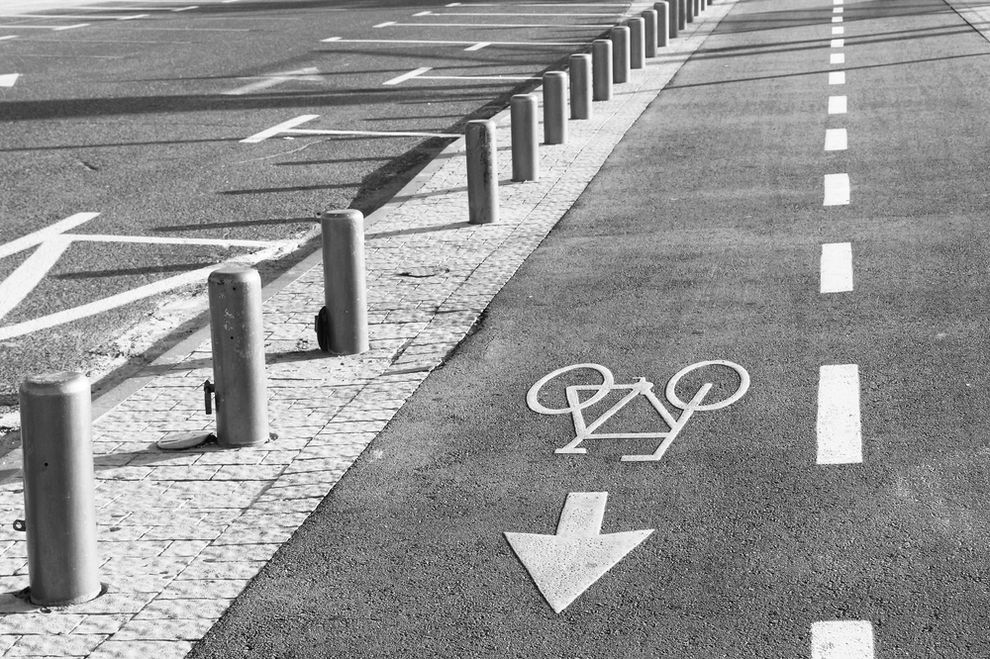Bike laws can become confusing and complex, with drivers and cyclists unsure which rules to follow. To help out, we’ll go over some of the California bicycle laws and safety tips so you can stay safe while enjoying your outdoor commute. When people ride bikes on public streets, they have the same responsibilities and rights as motor vehicle drivers and therefore are subject to the same rules. To stay safe on the road, you want to make sure you’re predictable, visible, and consistently communicating your intentions to other vehicles. After all, you don’t have bright headlights or a turn signal like cars do. If you want to learn some of the fundamental rules, such as where you can legally ride or how to equip your bike, click here [link] to visit our previous post. On this page, we’ll go over California vehicle code basics, lanes and routes, and how to signal turns on a bicycle.
California Vehicle Code Basics
Vehicle Code Section 231: This code defines a bicycle as a device that a person rides that’s propelled exclusively by human power through a chain, belt, or gears and has one or more wheels. The person riding the bike is subject to the provisions of the code specified in Sections 21200 and 21200.5.
Vehicle Code 21200(a): Section 212000(a) states that when a person rides a bicycle or operates a pedicab on a highway, they have all the rights and are subject to all the provisions applicable to a motor vehicle driver in this division. It includes (but is not limited to) provisions regarding driving under the influence of alcohol.
Vehicle Code Section 21200.5: This section states that people cannot lawfully operate a bicycle while under the influence of drugs or alcohol. Any person arrested for violating this section can request a test of their blood, urine, or breath to determine their blood’s drug and alcohol content. If they are convicted, the person is punished by a fine of no more than $250. If they’re between the ages of 13-21, their driving privileges will be suspended or delayed for one year.
Vehicle Code Section 21212: This section requires people operating a bicycle under 18 years old to wear a correctly fitted helmet.
Bicycle Paths, Lanes, Routes, and Cycle Tracks
Bike Paths (Class I): Bike paths are shared-use, or multi-use paths paved right-of-way for exclusive use by pedestrians, bicyclists, and others using non-motorized means of transportation. They’re physically separate from motor vehicle traffic and may be constructed in roadway right-of-way or exclusive right-of-way. They provide critical connections in cities where roadways are absent or aren’t conducive to bicycles.
Bike Lanes (Class II): Bike lanes are defined by signage and pavement striping used to allocate a portion of the roadway for preferential or exclusive bike travel. They are one-way facilities on either side of the road. When possible, they should be enhanced with treatments to improve connectivity and safety by addressing site-specific problems, such as warnings or wayfinding signage.
Bike Routes (Class III): Bike routes share use with motor vehicle traffic within the same lane. They are designated by signs and specify preferred routes through corridors with high demand or provide continuity to other bike facilities. When possible, they should be enhanced with treatments to improve connectivity and safety, such as with “Sharrows,” which are shared lane markings to define that the road is a shared-use facility.
Cycle Tracks (Class IV): Cycle tracks are protected bikeways that are exclusive bike facilities that combine the on-street infrastructure of a traditional bicycle lane with a separated path. They’re distinct from the sidewalk and physically separate from vehicle traffic. The physical separation may include the form of parked cars, posts, or a combination of the two.

Signaling While Riding a Bike
When a cyclist is going to turn left or right, they need to continuously signal their intentions during the last 100 feet before turning. Hand and arm signals are given from the left side of the bicycle.
- Left Turn: Your arm and hand are extended horizontally beyond the side of the bike.
- Right Turn: Your arm and hand are extended upward beyond the side of the bicycle (forming a 90-degree angle). Cyclists may also extend their right hand and arm horizontally to the right side of the bike.
- Stop or Speed Decrease: To indicate a stop or sudden decrease of speed, extend your arm and hand downward beyond the side of the bicycle.
We hope you now have a good understanding of the California bicycle laws and safety tips! If you have any other questions or are looking for an attorney specializing in bicycle laws and regulations, Bonnici Law Group is here to help. We dedicate our practice to our clients, and we are San Diego’s bicycle legal team bringing personalized help to the law! You can reach us by phone at (619) 259-5199 or click here for a free consultation.

Bicycle, Injury, and Disability Legal Team in in Westwood, CA
Westwood, CA, is a lively and diverse neighborhood located in the heart of Los Angeles.
Personal Injury in West Hollywood, CA
West Hollywood, California, is a vibrant and dynamic city in the heart of Los Angeles, renowned for its artistic flair, trendy boutiques, and world-class entertainment scene.


